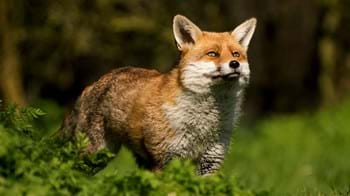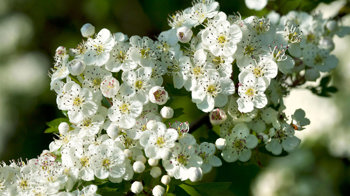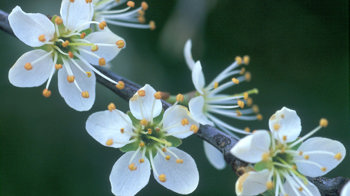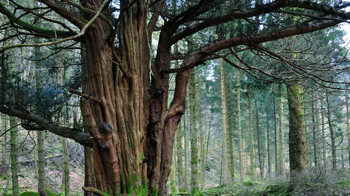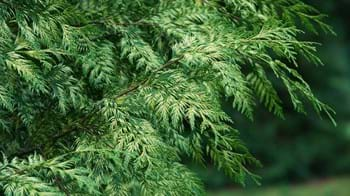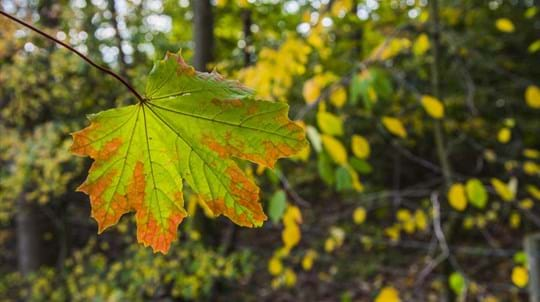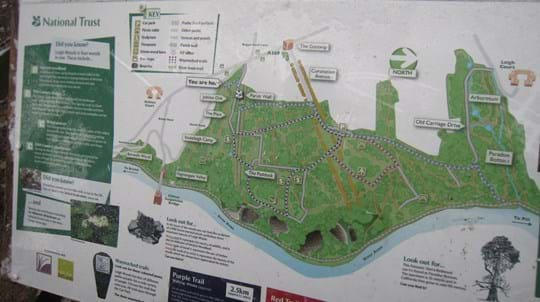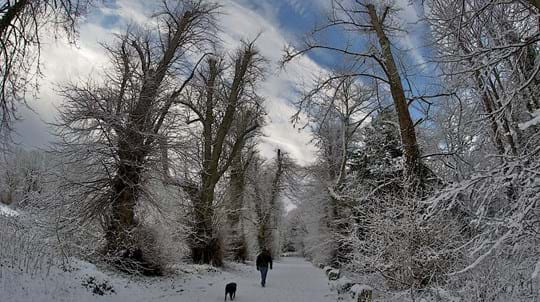
Bishops Knoll
Stoke Bishop

Woodland Trust wood
2.98 ha (7.36 acres)
ST553751
Explorer 155
OS Landranger 172
Bishops Knoll has a fairytale quality, its hidden world of crumbling walls and primrose paths cloaked in tendrils of resurgent greenery. It's Bristol's very own secret garden.
Close to the Avon Gorge, this once-grand Victorian garden is now being reclaimed by Woodland Trust volunteers. After spending years overgrown with ivy, bamboo and laurel, the woodland is slowly being uncovered as we discover the lost ornamental terraced gardens and arboretum.
Features
- Parking nearby
- Public access
How to get to Bishops Knoll
Bishops Knoll is on the outskirts of Sneyd Park and the Avon Gorge in Bristol.
It sits between Sneyd Park to the south and east, Avon Wildlife Trust's Bennett's Patch Nature Reserve and a railway line to the west, and Old Sneed Park Nature Reserve owned by Bristol City Council and Sea Mills to the north.
The main entrance to Bishops Knoll is located on Bramble Lane.
The nearest train station is Sea Mills, a short walk away.
For up-to-date public transport information, visit www.traveline.info.
The nearest bus stop is at Julian Road, a 1km walk away along pavement. For up-to-date public transport information, visit www.traveline.info.
Facilities and access
The main entrance to Bishops Knoll is located on Bramble Lane, a public road with a kerbed pavement, and a wide opening gate. A public footpath bisects the property and there is also access from Bennett's Patch Nature Reserve. There is also access from the northern end across Old Sneed Park Nature Reserve through a kissing gate, and also in the south-west corner via a track under the railway line which leads from the A4 Portway and Bennett's Patch. There are some uneven steps to climb to access the site.
Bishops Knoll is located on a fairly steep slope as it is part of the Avon river valley, therefore most paths have some gradient to them. There are unsurfaced tracks leading through the woodland. These involve slopes which can be slippery when wet as well as some long flights of steps.
Circular routes are available with numerous paths both throughout the wood and gardens, and also to neighbouring sites. Access to the terraced gardens is via steep steps.
There is no Woodland Trust car park at Bishops Knoll. Informal on road parking is available at Bramble Lane for a small number of vehicles.
The nearest public toilets are on Circular Road to the south of the site.
Wildlife and habitats
Animals
Bishops Knoll sits between two other nature reserves, making the area perfect for a range of birds, mammals, insects and other wildlife. The area is important for a number of bats, butterflies and moths.
Trees, plants and fungi
The first thing to catch the eye as you enter the wood is a mighty oak that looms through the branches of apple and other fruit trees. Measuring a portly seven metres around its girth, it could be as much as 600 years old, and probably dates back to the site's origins as a medieval deer park. Then come the skyscrapers. A soaring Monterey cypress, a giant coast redwood and a vast Austrian black pine, among others, are reminders that the present woodland once made up the grounds of a magnificent mansion house. There are also a small number of ancient pollarded oak trees at the northern edge of the wood - at least one thought to be 700 years old - as well as in the adjacent Old Sneed Park Nature Reserve.
There are oddities and colours to be spied beneath the trees too. The nationally scarce ivy broomrape, a strange parasitic plant that lacks leaves or chlorophyll, sprouts flower stalks from the roots of the ivy that covers the woodland floor. Look out also for spring flowers such as bluebell, primrose and lesser celandine.
Habitats
The woodland at Bishops Knoll contains a mix of veteran exotic and ancient trees as well as planted native broadleaves, including oak, ash, hazel and hawthorn. We're restoring the overgrown arboretum and rediscovering other hidden features being uncovered.

A lasting legacy
This wood is just one of many to have been protected by gifts in wills, securing it for generations to come. Your legacy gift could also make a real difference to woods, trees and wildlife.
Learn what your gift could meanIn the First World War, Knoll House became Britain's only privately owned hospital to receive wounded soldiers from the front.
About Bishops Knoll
History
Bishops Knoll is layered with a fascinating and vivid history. It was planted on the site of a deer park enclosed in the 13th century to provide venison for the Bishops of Worcester. It was then gifted by Henry VIII after the dissolution of the monasteries to Sir Ralph Sadler (portrayed in the BBC drama Wolf Hall).
It later became the grounds of a large, late-nineteenth century estate house called The Knoll, built by Bristol merchant Peter Prankerd. The house was knocked down in the 1970s, but during its heyday it had a fine entrance hall panelled in dark oak, which led to a large conservatory called the Winter Garden, a mirror-lined ballroom and a billiard room. A tennis court, a table-tennis chalet and horse paddocks were among the outdoor facilities, while extensive fruit and vegetable gardens, greenhouses, orchards, beehives and a dairy kept the house well supplied with food.
In the First World War, the now-demolished mansion became a makeshift hospital for Australian soldiers, set up and run by the then owner, Robert Edwin Bush, at his own expense. Robert had made his fortune in Australia as a sheep farmer and returned to England in 1904 as a multi-millionaire. He bought the house in 1908, and with his wife Marjorie turned the house into a hospital which treated more than 2,000 injured Australian servicemen.
After Robert's death in 1939, the house passed through various owners, becoming a hostel and then a school for nurses, until it was eventually demolished in 1972 with the grounds becoming overgrown. The land was then donated to the Woodland Trust by a building firm in 1983.
Restored features
Much of the terraced gardens, sloping arboretum, orchards, lawns and paddocks - with their network of pleasure paths - still remain today.
As you walk the wood you'll pass a number of remnant structures that hint at Bishops Knoll's rich past. Keep an eye out for:
- exquisite Victorian railings
- a tubular wrought iron pergola
- a flight of stone steps leading up to one of seven terraces
- a kitchen garden wall rebuilt by volunteers in 2018
- a now roofless Victorian folly - thought to have been a rather ornate privy!
Things to do at Bishops Knoll
Walks
Well-used paths allow a wide network of walks with many interesting features to look out for and views across the gorge to Leigh Woods.
As you explore, look out for striking new badger sculptures snuffling beside the trail.

























